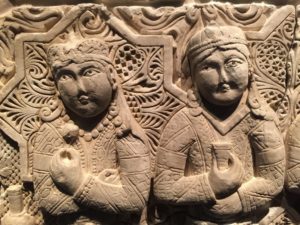by Sandra Gulland | May 4, 2010 | Adventures of a Writing Life |
Fact-based fiction? Biographical fiction? What does one call fiction that is based on the life of a historical character? I like Joyce Carol Oates’ expression: “biographically fueled fiction.”
Here’s what she had to say about it in a review of a biographical novel about Emily Dickinson in the New York Review of Books:
In these exemplary works of biographically fueled fiction it’s as if the postmodernist impulse to rewrite and revise the past has been balanced by a more Romantic wish to reenter, renew, and revitalize the past: not to suggest an ironic distance from its inhabitants but to honor them by granting them life again, including always the stumbling hesitations, misfires, and despair of actual life….
Just a snippet … I’m packing for France: research with wine and cheese.
SaveSave
by Sandra Gulland | May 8, 2009 | Baroque Explorations |
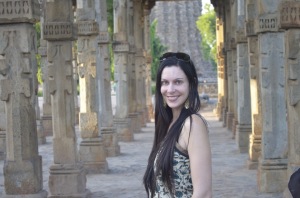
Michelle Moran, who is a blazing star right now in the world of historical fiction, has named this blog as the top of ten blogs by authors of historical fiction. I’m honored and surprised! Thank you, Michelle.
I’ll be sure to explore the other blogs on her list. (I can personally recommend Versailles and more.)
Michelle is not only a historical novelist, but an academic: a wonderful combination for a genre that requires so much research. Her own blog should have been at the top of her list: History Buff.
SaveSaveSaveSaveSaveSave
by Sandra Gulland | Mar 9, 2009 | Adventures of a Writing Life |
The Adam Braver discussion on Readerville.com is over (although it will no doubt remain on-line). A number of things were said about that favorite subject of mine: the line between fact and fiction.
Karen Templer:
… any historical record has gaps in it, things we don’t and can’t know. If a writer takes the liberty of filling in those gaps, then we’re looking at fiction rather than nonfiction. But there’s no bright line between fiction and nonfiction … , and historical fiction (for want of a better term for books-that-include-real-people-or-events) is a long continuum. “Girl with a Pearl Earring” has real people in it, but the story is entirely fiction. Nobody knows who the girl was; Tracy made the whole thing up. So let’s say a book like that goes at the fiction end of the continuum. Then at the other end, what would be the nonfiction end, you’ve got a book like Capote’s, where it’s extensively researched and based not very loosely at all on real people and events, but narrative devices are used in the telling of those events. So it’s closer to documentary, but it’s literary documentary.
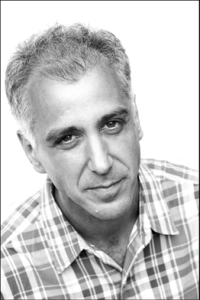
Adam Braver, in responding to a number of posts, said:
… the nature of storytelling has always been a combination of real details and added details—sometimes consciously for the sake of narrative, and sometimes unconsciously, as our memories reconstruct the events for a better narrative. So in that vein, I don’t mind these blends.
And then he said something very dear to my heart:
On an ethical level, however, I do think one has to be upfront with a reader, as there becomes an implied contract.
I think this “contract”—often in the form of an Author’s Note —is important in fact-based fiction. The reader needs to know where he or she stands.
Braver again:
Most of the unbelievable stuff is the real stuff. My imagination works best at seeping through the cracks, not in creating the larger than life structures.
That’s often how I work.
Here’s from Karen again:
It makes no sense, I know, but when I hear “historical fiction” I think of events/people further back in history than the ’60s. But I’d also have a hard time applying it to a book like yours with a more (pardon the term) postmodern structure. Can a thing be postmodern historical fiction? I don’t know. But I think I’m sticking with “literary documentary” when trying to describe your work in particular.
And so, a new genre is born: postmodern historical fiction. I love it.
by Sandra Gulland | Mar 2, 2009 | Adventures of a Writing Life |
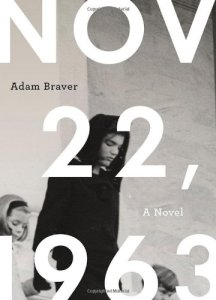
I’ve posted before about Adam Braver‘s novel, Nov 22, 1963. It’s a novel about that day, the day President Kennedy was shot, but mostly it’s a novel about Jackie Kennedy. It’s beautifully, artfully, achingly spare: a work of art in words.
I’m excited about his participation on Readerville.com this week: click here if you’re interested. I’m especially interested, because of that subject so dear to me (for obvious reasons): the intersection of fact and fiction.

To quote Braver:
One of the things that I’d been thinking about for the past couple of years is the equation: stories + memories + facts = history. This doesn’t necessarily have to apply to history as “the historical record,” but also to our family histories, personal histories, social histories, etc. From a writing standpoint, it was also about finding the somewhat artificial distinction between genres—namely fiction and nonfiction. When you deal with facts, memories, and stories, I’m not sure it’s possible that anything can be pure fiction or pure truth.
I love this:
I really wanted to write a book that consciously combined those elements: where the facts were facts, the stories were stories, and the memories were memories. Put them together in one space, yet let each one speak for itself.
And this:
I’ve always been attracted to books that allow the quiet moments to tell a bigger story, and, I suppose, I was trying to follow in that suit. It wasn’t a matter so much of sifting through so much information, and then whittling it down. It was that conscious/subconscious radar for finding the little yet moving details.
I sent the current draft of the plot off this morning for a writers’ group meet this coming Friday, so I’ll have some time to following this fascinating Braver dialogue.
by Sandra Gulland | Jan 15, 2009 | Adventures of a Writing Life |
An important part of writing is reading and I’ve been reading biographical fiction of late, one title after another, observing how other authors take on “a life”. Two I started and abandoned: they were set in the Court of the Sun King. One had too many factual errors for me to enjoy it. The other I began with joy—the language was bawdy and the spirit zestful—but I found the portraits of the characters too one-dimensional, and, again, there were also errors of fact (without apparent reason). It began to feel like an all-too-English portrayal of “those terrible French” (as if the English are so innocent!).
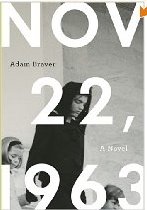
The next novel was a gem: November 22, 1963, by Adam Braver, a novel about Jackie Kennedy, primarily, and that fateful day. I’ll have more to say about this novel later (I’m at the beach, and the book is back home), but for now, I’ll make these general observations:
A highly dramatic and sympathetic subject is a serious leg-up when it comes to biographical novels, and this novel rates five stars on both counts. It held me breathless from the first sentence to the last, but in the hands of another writer, I could easily have set such a novel down, in spite of the compelling subject. But Braver is a fantastic writer. He handles this subject with perfect authority, elegance, but most of all: heart. This is a very spare novel: the author cuts between different points of view with great ease. We’re given slices of the various events of that day from the perspective of a police escort, a coffin manufacturer, the man whose life work was care for the presidential limousine, the various White House staff.
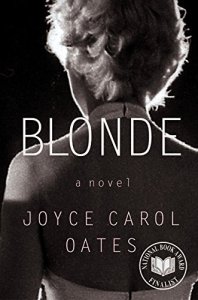
I followed this spare novel with one of vast proportions (728 pages of small type!): Blonde, by Joyce Carol Oates. I finished this last night and in a word: wow. I’ve not read Oates before—I find her style generally too gothic for my taste—but I respect her greatly as a writer, and I’d read that this novel, a novel about Marilyn Monroe, was her best.
It is a stunning—stunning—experience. Oates’ gothic, feverish, hallucinatory style is perfectly suited to the subject of Monroe. As a writer, Oates is fearless: there is nothing that she shrinks from. I wouldn’t have had the courage, personally, to write certain (awful!) scenes—especially those involving JFK (thinking of Caroline).
The characters are never named, interestingly: “the Ex-Athlete” is Joe DeMaggio, “the Playwright” is Arthur Miller, “the President” is JFK, for example. This was possibly a legal consideration, but, more importantly, it lent itself to the mythic feel of the novel.
It’s hard to create sympathy for an addict—drunks are notoriously impossible for the writer of fiction to portray sympathetically, for example—but I’ve come away from this novel with a great sympathy and respect for Monroe.
As always, I’m curious about what was not included: this is always key. Nothing about the Mafia lovers, nothing about her secretary. Certainly there were lovers enough, and a staff would have interfered with the image of Marilyn so very alone.
I believe that Author’s Notes are very important with respect to a fact-baced fiction. The reader needs to know: Where do we stand? What’s fact? What’s fiction? Can I trust you (the author)? Oates states:
Blonde is a radically distilled “life” in the form of fiction, and, for all it’s length, synecdoche is the principle of appropriation.
(Okay, I had to look up synecdoche: a figure of speech in which the part is made to represent the whole or vice-versa.)
Oates makes it clear that instead of many lovers, abortions, medical crisis, she will focus on a select few. With any biographical fiction, one must cut away, cut away, cut away to get at the essence, in order to bring a life to life.
Biographical facts regarding Marilyn Monroe should be sought not in Blonde, which is not intended as a historic document, but in biographies of the subject.
I appreciate her clarity, but what Oates has done, I’m quite convinced, is recreate Monroe’s spirit. An amazing work.
